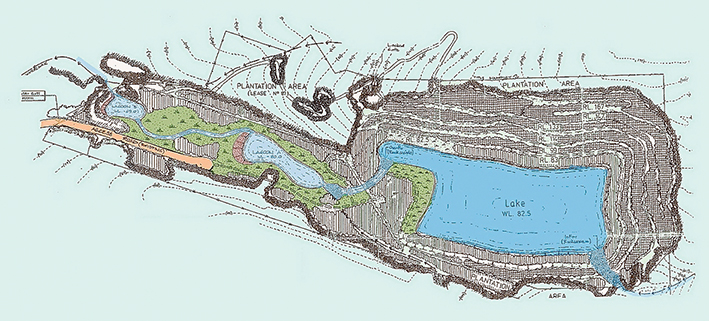
HILLVIEW Quarries had an obligation to rehabilitate its Boundary Rd site once it stopped extracting rock, sustainable environment director Steve Chapple told the 10 March council meeting.
But Hillview’s application for a 10-year permit extension meant the matter was on hold, he said.
In response to a question from Mark Fancett of Peninsula Preservation Group, a leading figure in the successful fight to stop the old quarry being used as a tip, Mr Chapple said the shire would soon contact Hillview “to request an acceptable time frame” for details of its proposals for the site.
Quarry owner the Ross Trust’s application to convert its Pioneer site into a rubbish tip created huge controversy in 2013, culminating in refusal by the Environment Protection Authority to allow the proposal on a number of grounds, including concerns about groundwater pollution, threat of bushfires, odour, dust and weeds.
The application has been on hold for eight months, delaying rehabilitation.
“There is an obligation for [Hillview] that, once they cease those quarrying activities, to implement their environmental management plan.
But we hope to know a bit more about that in the near future,” Mr Chapple told the council meeting.
Hillview, which bought the Pioneer quarry more than 20 years ago but has never extracted stone from it, requested the extension of its permit “to enable the company to utilise the site for the uses permitted by the permit and to assess the future plans for the site”.
It did not detail any future plans.
All quarrying machinery was removed from the site several years ago. Hillview operates a quarry at the western end of Boundary Rd.
After the meeting Mr Fancett said: “They have had more than 20 years [to clean up the site and surrounds] and have not done so. The 121 Boundary Rd site has exhausted its commercial quantities of granite.
“[Hillview’s] application for a permit extension is merely an excuse to delay the rehabilitation it should have done at the end of the mine’s life, but also throughout its life. To then place that application on hold for what period no one knows is scandalous.
“The only work at the site in the past five years was the construction of a ‘fire track’ around the pit,” he said. “This track was impractical as a fire track due to its steepness and would have been too dangerous to access in the event of a fire.”
The highly invasive weed species pinus radiata had spread from the quarry site into about four hectares of the neighbouring Arthurs Seat State Park, Mr Fancett said.
The site rehabilitation plan was discussed at a council meeting in April 1998, when it was noted that the plan “illustrates existing and proposed rehabilitation during a three-year post-closure period after cessation of extractive activity”.
Mr Fancett said: “As there has been no extractive activity in more than 20 years, this plan should have been enforced long ago.”
Rehabilitating the site would include returning Sheepwash Creek, which rises above the quarry on the Arthurs Seat escarpment, close to its original course. This would create a 40-metre waterfall into the old quarry in its southwest corner. The water is currently piped around the quarry pit.
The creek would then flow north out of the pit through a series of lagoons to its current course then down to Safety Beach and into Port Phillip.
Other remedial work would include revegetating rock “ledges” or “steps” created during excavation.
Stringent conditions were placed on the site rehabilitation to protect flora and fauna, including threatened bird species including Lewin’s rail, the white-bellied sea eagle and the powerful owl. There could be potential to reintroduce the southern brown bandicoot to the area, a listed species extinct on the peninsula.
Also protected are plant species of national environmental significance, Mr Fancett said, including purple eyebright, which is likely to be growing on the quarry site, since it has been reported to be growing in the surrounding state park.
Federal environment laws provide a legal framework to protect and manage nationally and internationally important flora, fauna, ecological communities and heritage places.


